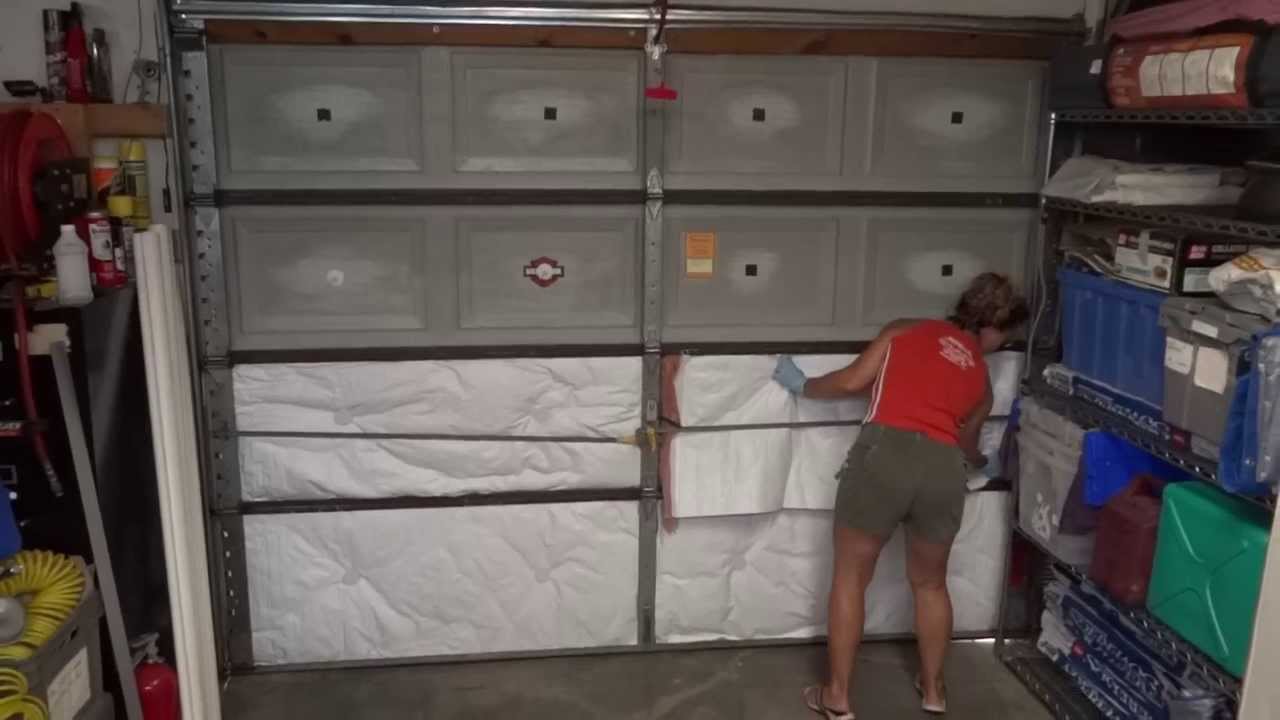Do you know how many types of garage door insulation is available in the market? And what is the benefits of these?
In these times, insulating garage doors is more important than ever. Due to climate change, summers are much hotter, and winters are much colder. If you don’t have the appropriate insulation, your AC and heating devices will work more than normal. At the end, you’ll end up spending a small fortune on electricity bills.
Also, extreme temperatures endanger the health of your loved ones. So, if you don’t want that to happen, you should insulate your garage doors as soon as possible. But before doing it, you need to know which the best insulation materials are.
In this article you’ll know them all. You’ll also know all the benefits you can get by insulating your garage doors.
As well as garage door insulation is very helpful to keep workable of a garage door opener perfectly.
What is the Benefit of Garage Door Insulation?
If you are not concern about benefit of garage door insulation, here is a short list. Hope these will help you to know the uses of this product.
For Doors & Windows
Usually, the heat and cold outside enter your home through doors and windows. The garage door is the area of greatest thermal interaction, because it’s the biggest door in a house. Depending on the material, garage doors can spread cold and heat to a greater or lesser degree. Usually, metal garage doors are the most troublesome of all.
For Kitchen
During the summer, you could cook an egg on a metal garage door exposed to sun’s rays. In winter, a metal garage door without insulation could turn your garage into a freezer. So, if you have one of these, you should use an insulator with a high R-value to get good results.
For Woods
On the other hand, wooden garage doors have a greater capacity to dissipate heat. If the wood is hollow, its R-value will be higher. However, it’s a good idea to install insulators on these doors, but with a lower R-value.
For Air Conditioners
Garage door insulation increases the efficiency of your AC and heating units. In addition, it reduces the monthly consumption of energy in your home, helping you save money. During the winter, they’ll keep your home cool, preventing the entry of radiant heat. In winter, they’ll keep your home warm, preventing air from escaping.
To Keep Away of Pests
But those aren’t all the benefits. Some garage door insulators keep pests away from your garage. Also, they keep your garage protected in case of fire. For these and many other reasons, insulating you garage doors is always a good idea.
Types of Garage Door Insulation
There are many different brands of garage door insulation on the market. Each with its own pros and cons. However, most of these products can be classified into four main types. Here’s a list with all of them:
- Fiberglass batt insulation
- Rigid foam insulation
- Spray foam insulation
- Cellulose insulation
Fiberglass Batt Insulation
Fiberglass is an invention of the Owens Corning Company. The initial purpose was to take advantage of glass waste. Over time, it was discovered that the material could be used as a thermal insulator. Its popularity soon grew and millions of people in the world started using it.
Fiberglass batts are made of small glass fibers randomly interleaved. The small empty spaces between the fibers allow fresh air to pass through. That way, it dissipates too low and too high temperatures.
Fiberglass is a safe substitute for asbestos. However, it tends to cause respiratory complications when inhaled. Therefore, make sure there are no fiberglass portions exposed to air after installation.
In contrast to the rest of the insulators, fiberglass is the cheapest of all.
Rigid Foam Insulation
Rigid foam insulation is one of the most efficient alternatives, due to its high R-value. This type of insulation comes in the form of hard panels. They’re lightweight, easy to install, and resistant to high temperatures. Plus, you can cut them to size with a utility knife.
Foam insulation is classified into two main types:
- Closed cell foam
- Open cell foam
Closed cell foam insulation uses air trapped in small bubbles. In appearance, it’s very similar to air bubble film, but thicker. In addition, its R-value is very high, making it the ideal material for areas with extreme climates.
Open cell foam has open pores to allow air to pass through. It’s lighter than its closed-cell counterpart, but its R-value is lower.
Spray Foam Insulation
Spray foam insulation is injected at very high pressure. It has two active components, which when mixed, harden in contact with air. The end result is a hard and porous material.
Spray foam insulation also prevents the passage of noise from the outside. Therefore, it’s commonly used in urban areas with high vehicle traffic.
Cellulose Insulation
Cellulose insulation is an environmentally friendly and safe alternative to synthetic insulators. It’s mainly composed of shredded news paper, adhesive and fire retardant. It also contains borax to keep pests away and prevent fungal growth.
Cellulose insulation is applied with a blowing machine. It isn’t the most recommended material for garage doors, because it adds too much weight. Also, it tends to burn when exposed to very high temperatures.
Conclusion
As you can see, there are many alternatives of garage door insulation from which to choose. Depends on you to choose the most appropriate option. So, make sure to consider:
- The type of garage door you have.
- The climate conditions in your neighborhood.
Before choosing a certain material, check its combustion temperature. Then check the max temperature that your garage door reaches. If it’s above the combustion temperature, choose something more resistant.





